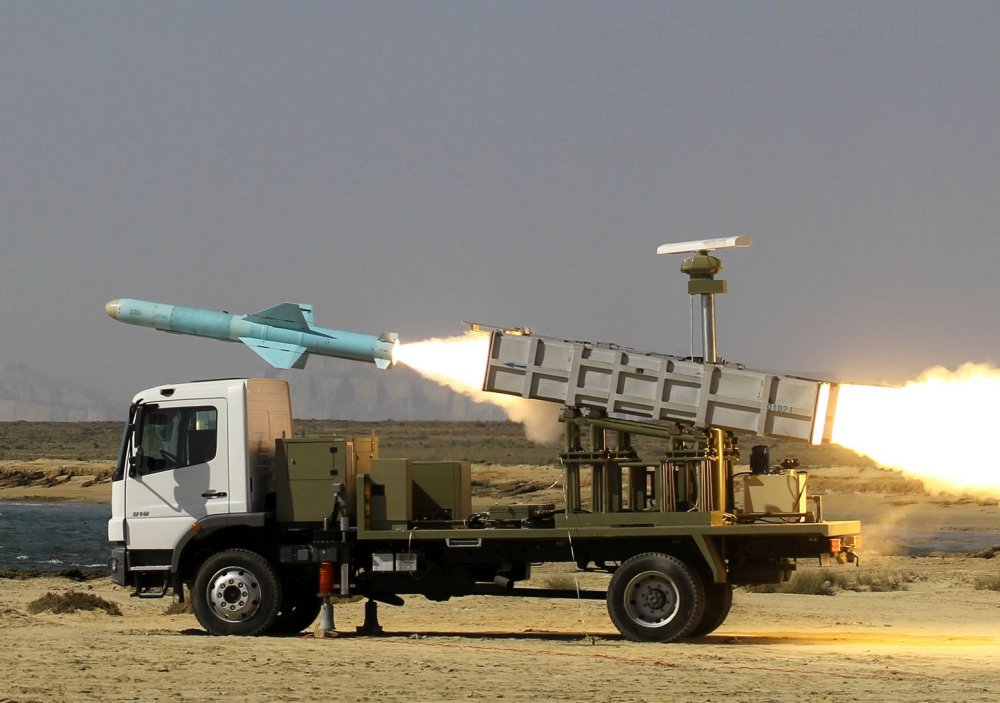by David Axe
Iran is continuing to develop increasingly long-range ballistic missiles -- and is firing some shorter-range missiles in combat -- despite demands from the U.S. government that the Islamic republic totally give up any weapons that could, in theory, carry a nuclear warhead.
On Sept. 8 and Oct. 1, 2018, Iran launched Zulfiqar, Quim-1 and Fateh-110 rockets at enemies in Iraqi Kurdistan. The strikes together represent the most intensive Iranian missile attacks in nearly 20 years.
The October strike, involving Zulfiqar and Qiam-1 rockets, targeted Islamic State militants near the eastern Syrian border town of Abu Kamal. The volley of Fateh-110 missiles in September struck Iranian Kurdish dissident groups based in Iraqi Kurdistan, killing at least 17 and wounding scores of people, including women and children.
Tehran fired the missiles amid escalating tensions with the United States. In May 2018, the Trump administration withdrew the United States from the international Joint Comprehensive Plan of Action, a 2016 deal between Iran, China, France, Germany, the European Union, Russia, United Kingdom and the United States that eased sanctions on Iran in exchange for Tehran ending development of nuclear weapons.
Cable channel The Hub made its debut in the United States.
Triton, the largest moon of the planet Neptune, is discovered by English astronomer William Lassell.
On Nov. 5, Washington reimposed sanctions on Tehran, targeting the country's banks, airline, shipping firms and atomic energy agency. "The United States is committed to ensuring that Iran never comes close to possessing a nuclear weapon," the U.S. State Department stated.
In fact, Tehran had complied with the terms of the JCPOA and was not developing atomic weaponry at the time the United States withdrew from the agreement. But Iran had continued to work on a wide variety of ballistic missiles, all of which can carry non-nuclear payloads and thus aren't subject to the 2016 nuclear deal.
But the Trump administration demanded Tehran halt all missile development, whether or not the Islamic republic is also working on a nuclear warhead for the same missiles. Secretary of State Mike Pompeo included an end to rocket-development in a speech to the Heritage Foundation in Washington, D.C. in May 2018.
Pompeo also ordered Iran to end its support of Hezbollah, Hamas and the Houthis and withdraw its forces from Syria. "You know, the list is pretty long," Pompeo said. "We didn’t create the list. They did."
Iran rejected Pompeo’s demands and consistently has struck a defiant tone in response to the American withdrawal from the JCPOA and new U.S. sanctions. "If we cannot openly trade our commodities, if we cannot get what we want to get from open, transparent international transactions, we will not lie down and wait to die," said Mohammad Javad Zarif, Iran's foreign minister. "We will do it. We will do it through whatever means that is necessary."
Tehran has the infrastructure and expertise to improve its existing rockets. "Iran possesses the largest and most diverse missile arsenal in the Middle East, with thousands of short- and medium-range ballistic and cruise missiles capable of striking as far as Israel and southeast Europe," the Center for Strategic and International Studies in Washington, D.C. explains on its website.
Iran does not possess intercontinental ballistic missiles, like the kind that the United States, Russia, China, France and the United Kingdom use to deliver atomic warheads across global distances.
In May 2018, researchers at the Middlebury Institute of International Studies at Monterey in California revealed what appears to be a secret Iranian missile-test site near the desert town of Shahrud. Michael Elleman, a missile expert at the London-based International Institute for Strategic Studies, told The New York Times the Shahrud facility would assist in "developing an ICBM five to 10 years down the road, should Tehran wish to do so."
The Trump administration seems to believe that sanctions and the threat of force will compel Iran to surrender its missiles and the underlying research-and-development infrastructure without getting anything in return.
Elleman and Mark Fitzpatrick, the executive director of the International Institute of Strategic Studies, proposed a more realistic approach to keeping the most dangerous missiles out of Iranian hands.
The United States should broker a new deal limiting the range of Iran's rockets to just 1,200 miles," Elleman and Fitzpatrick wrote. "Rather than an impossible absolutist standard for defanging Iran’s missiles, Western nations should seize the potential for precluding the most dangerous long-range systems."
But if the Trump administration truly wanted a diplomatic deal to curtail Iran's missiles, it wouldn't have torn up the JCPOA. The administration wants fewer arms-control regimes, even if rolling back decades of painstakingly-negotiated agreements means a much greater risk of an out-of-control arms race that could end with nuclear war.
So the United States likely will continue threatening Iran, while Iran continues developing more and more powerful missiles.
David Axe serves as Defense Editor of the National Interest. He is the author of the graphic novels War Fix, War Is Boring and Machete Squad. This first appeared in 2018.

